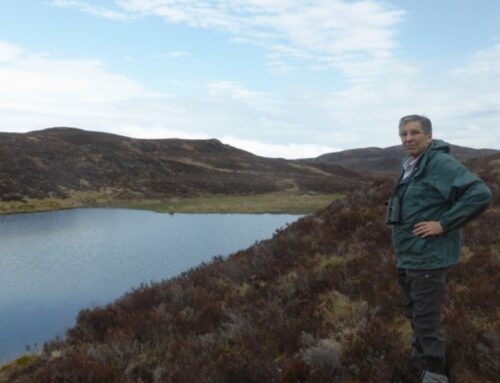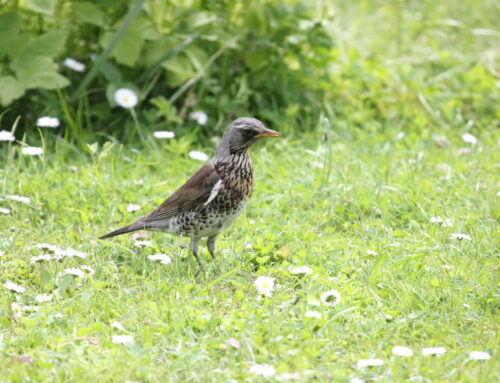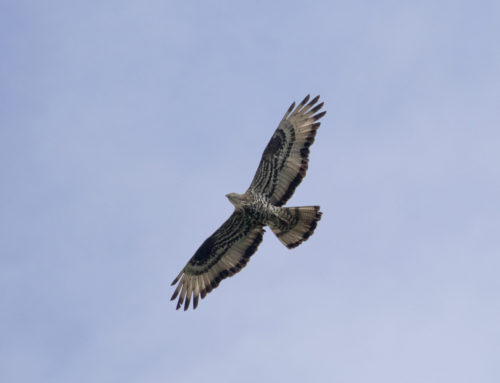2023 – when the RBBP turned 50
I hope you have noticed that the Rare Breeding Birds Panel celebrated its 50th anniversary last year. Whilst the RBBP was formed as an independent body for monitoring the UK’s rarest breeding birds in December 1972, the first meeting of the Panel was not held until spring 1973, so we elected to mark five decades of activity with a variety of activities in 2023.
As a key part of our anniversary activities, we published two papers in April 2023 reviewing the work of the RBBP over the first 50 years of operation and what this work has told us about the UK’s rare breeding birds. The paper in British Birds (www.britishbirds.co.uk), “The Rare Breeding Birds Panel: five decades of monitoring the UK’s rare breeding birds” (Stroud et al. 2023) was made available on our website in September and can be read here (and the supplementary online material is here). It focused on the development of the Panel’s work, describing how this has evolved in step with the technology that supports the collection, sharing and use of data. It stressed how the birdwatching community plays a crucial part in the ability of the organisation to run effectively, set against the background of major change in the numbers and distribution of our rarest nesting birds.

Our British Wildlife paper, published April 2023
I am pleased to announce that the second paper, “Monitoring five decades of change in the UK’s rarest breeding birds through citizen science: the Rare Breeding Birds Panel” (Eaton et al. 2023) is now also available to read on our website here, thanks to the journal British Wildlife (www.britishwildlife.com). The paper complements the British Birds paper by focusing more on the changes in bird populations as shown by RBBP data collected since 1973, as well as the value of this data for bird conservation and research. Some of the key points are:
- 14 species have colonised the UK since 1973 and are now annual breeders, such as Mediterranean Gull, Spoonbill and Green Sandpiper. On the other hand, seven species have been added to the Birds of Conservation Concern list of former breeders, including Wryneck and Golden Oriole.
- If we control for changes over time in the list of species the RBBP collects data on, the number of rare breeding bird species in the UK has increased steadily over the last 50 years.
- Over the last 25 years, slightly more (30%) species have shown a strong increase than a strong decline (25%). Breaking this down into main breeding habitats shows that rare woodland birds are doing poorly, with most decreasing (see figure 2 from the paper, shown below).

- Trends in rare breeding birds in the UK reflect wider patterns – population trends in the UK are significantly correlated with trends in range as shown by the European Breeding Bird Atlas 2 (Keller et al. 2020).
- We know that the RBBP dataset is incomplete for many species, with coverage being assessed as “low” for 13% of regularly reported species. Coverage is best for waterbirds and seabirds, poorest for raptors.
- RBBP information has contributed to 15 UK Biodiversity Action Plans and 12 international Species Action Plans; allowed the targeting of habitat restoration; fed directly into plans for species reintroductions; and informed conservation management at site level.
- We conclude that the RBBP’s approach offers a low-cost and efficient way of monitoring a large number of species with multiple benefits for their conservation.
- Crucially, we highlight that “so much depends on the large number of citizen-science volunteer birdwatchers who provide most of the underlying records, along with the voluntary county bird recover system… this is a real strength of our recording systems.
In additional to the two publications mentioned above, we held an online conference over the two evenings of 15th and 16th March, with a range of excellent speakers talking about the work of the Panel, the value and use of our data, and on a wide range of the rare breeding birds that we report upon, including Hawfinch, Red Kite, Capercaillie, Honey-buzzard, Lesser Spotted Woodpeckers, rare terns, Scottish raptors and more! Very nearly 300 people attended the two evenings, many getting involved in the question sessions. If you missed the conference, or wish to view parts of it again, all the talks can still be seen on our YouTube channel here, or viewed through a summary article on our website here.

Some of the slides from the first evening of our online conference, showing the range of topics covered
We also promoted the work of the RBBP online through our Twitter/X account, in articles for Birdwatch and Birdwatching magazines, and in a number of talks given both online and in person. Behind the scenes we have been working on some website developments which we hope to be able to share in 2024.
Many thanks to all those who contributed to our anniversary year, and in particular to the two journals, British Birds and British Wildlife, for publishing our review papers. As always, we are grateful for the financial support the RBBP receives from the JNCC and RSPB, with additional funds from the BTO. In 2023 our additional anniversary activities were also supported by funds raised from sales of the BTO-published Into the Red book as curated by Kit Jewitt and Mike Toms.







Leave A Comment